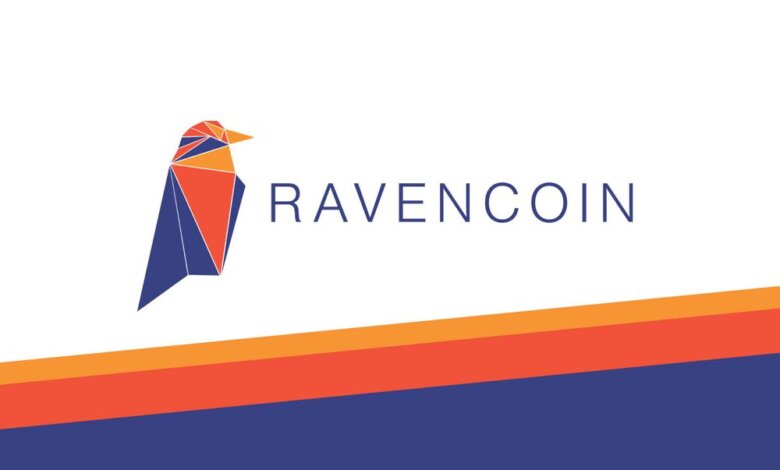Ravencoin (RVN) Things You Need To Know Before Investing

What Is Ravencoin (RVN)?
Ravencoin (RVN) is a digital peer-to-peer (P2P) network that aims to implement a use case-specific blockchain that is designed to efficiently handle one specific function: the transfer of assets from one party to another. Built on a fork of the Bitcoin code, Ravencoin was announced on Oct. 31, 2017, and released binaries for mining on Jan. 3, 2018, with a fair launch: no premine, ICO or masternodes. It was named after the TV show Game of Thrones.
Who Are the Founders of Ravencoin?
The Ravencoin whitepaper was published by Bruce Fenton, Tron Black and Joel Weight.
They stand out over the majority of the crypto crowd in that they were all seasoned businessmen and developers before they started this project.
Fenton is well known in crypto for being a board member and an executive director of the Bitcoin Foundation from 2015 to 2018. Before crypto, he had a solid career in investment banking as the vice president of Morgan Stanley in the 90s and a managing director of Atlantis Consulting for 13 years. Currently, he works as a managing director of Chainstone Labs, a stealth fintech startup.
Tron Black is a principal software developer with over 30 years of experience, including leading several software companies as a CEO. He has been working in crypto since 2013 on several ventures, including Verified Wallet, CoinCPA and t0. He is currently employed with Medici Ventures, a subsidiary of Overstock.com focused on blockchain technology applications.
Weight is a chief technology officer at Overstock.com, a well known online retailer. Previously, he has also been involved with Medici Ventures in the roles of COO and CTO. He is a veteran software developer who started his career after graduating from the University of Utah in 1998, right in the middle of the dot-com bubble.
What Makes Ravencoin Unique?
As a fork of the Bitcoin code, Ravencoin features four key changes: modified issuance schedule (with a block reward of 5,000 RVN), block time reduced to one minute, coin supply capped at 21 billion (a thousand times more than BTC), and a mining algorithm (KAWPOW, formerly X16R and X16RV2 respectively) intended to mitigate the centralization of mining caused by ASIC hardware.
Ravencoin aims to solve the problem of assets transfer and trading over a blockchain. Previously, if someone created an asset on the Bitcoin blockchain, it could be accidentally destroyed when someone traded the coins it was created with.
RVN coins are designed as internal currency within the network and must be burnt to issue token assets on the Ravenchain. The assets can represent anything: real-world custodial objects like gold or physical euros, virtual goods and objects, a share of a project like stocks and securities, airline miles or an hour of someone’s wage, etc.
How Many Ravencoin (RVN) Coins Are There in Circulation?
Ravencoin insists on being as fair and open as possible for a new cryptocurrency. There was no pre-mine, no ICO and no coins were held for developer or founders rewards.
In three years since its inception (as of March 2021), 39% of coins are already mined. The total supply is capped at 21 billion coins.
How Is the Ravencoin Network Secured?
Ravencoin is a fork of Bitcoin, so the power of decentralization and mathematics protects it. It uses a proof-of-work mining algorithm called KAWPOW, which replaced X16R and X16RV2 on May 6, 2020. This ensures security, but it is also designed to be ASIC resistant.
The X16r algorithm group employed initially uses 16 different hashing algorithms for each mining block. Still, the order in which they are used is different for every block and is derived from the last 8 bytes of the previous block’s hash. It was thought that the necessity to adapt each cycle did not give ASICs any advantage over CPUs and GPUs. Eventually, however, ASICs for it were created, andRavencoin had to switch to an entirely different algorithm, KAWPOW, which was a slightly modified version of ProgPow, which itself was the evolution of Ethash and is optimized for mining on GPUs.
This, combined with the commitment to fair distribution with no pre-mine, is meant to ensure that no single individual or organization will have or be able to have enough hash power to try to attempt a 51% attack or create an artificial market price shock.
Unfortunately, there was a successful known hack of the Ravencoin blockchain, which the public was informed about on June 3, 2020. During the attack, hackers managed to instantly mint i315 million RVN coins, which constitutes about 1.5% of Ravencoin’s supply cap of 21 billion. At the moment of the announcement, the price of the stolen RVN was estimated at USD 5.7M. None of the existing coin holders was directly affected by the attack.
Where Can You Buy Ravencoin (RVN)?
RVN is a freely traded coin with pairs against stablecoins, such as Tether (USDT), cryptocurrencies like Bitcoin and Ethereum, and fiat money.
The top exchanges for trading in Ravencoin are Binance, Huobi Global, OKEx, ZG.com, and VCC Exchange.
Also Read: Loopring [LRC] Things You Need To Know Before Investing








